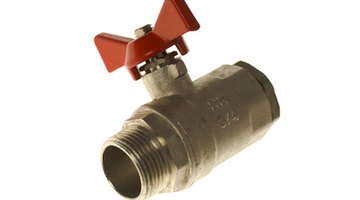How to Read a Houston, Texas Water Meter
A water meter is a useful house appliance that helps to keep track of the amount of water usage. In the 2000s, Houston, Texas faced problems involving poor, unclear and inaccurate water meter readings due to some new and inefficient electronic meters. Checking your water meter reading at least once a month, if not daily or weekly, will help you avoid a large and inaccurate water bill resulting from meter error or a water leak.

Step 1
Locate the meter box, typically situated outside the house, alongside a curb-stop and consumer valve. The consumer valve allows Houston homeowners to disconnect or turn on the water supply to their home. Remove the lid of the meter box using a large screwdriver; simply insert the screwdriver into one of the holes and pry the lid off.
Step 2
Remove the protective cap found on the meter. A typical meter in Houston consists of a meter register, leak detector and sweep handle. The face of the meter displays black and white numerals that register the amount of water intake. Standard water meters in Houston typically measure 10 gallons per rotation of the dial.
Step 3
Read the meter face numerals from left to right. The stationary blue zero found at the far right of most Houston water meters should also be included on the final meter reading. The numerals represent gallons of water used.
Step 4
Locate the leak detector. It is a triangle- or star-shaped wrought appliance. A high meter reading often represents a water leak in the residence.
Step 5
Rule out the possibility of water leaks by doing a water meter assessment. Before the assessment, be sure to jot down the current meter reading. Avoid any water consumption overnight, including consumption in toilets,your washing machine, dishwasher, tubs and showers, and faucets. Take another reading in the morning and compare it to the reading from the night before. If the figure is higher, a water leak is occurring on the property. A water leak is a high risk to the quality of your home; an undetected leak can cause serious mold damage if untreated.
References
Writer Bio
Chris Newton has worked as a professional writer since 2001. He spent two years writing software specifications then spent three years as a technical writer for Microsoft before turning to copywriting for software and e-commerce companies. He holds a Bachelor of Arts in English and creative writing from the University of Colorado.
Photo Credits
- Water Pipe with red handle image by Olga Sapegina from Fotolia.com
More Articles



